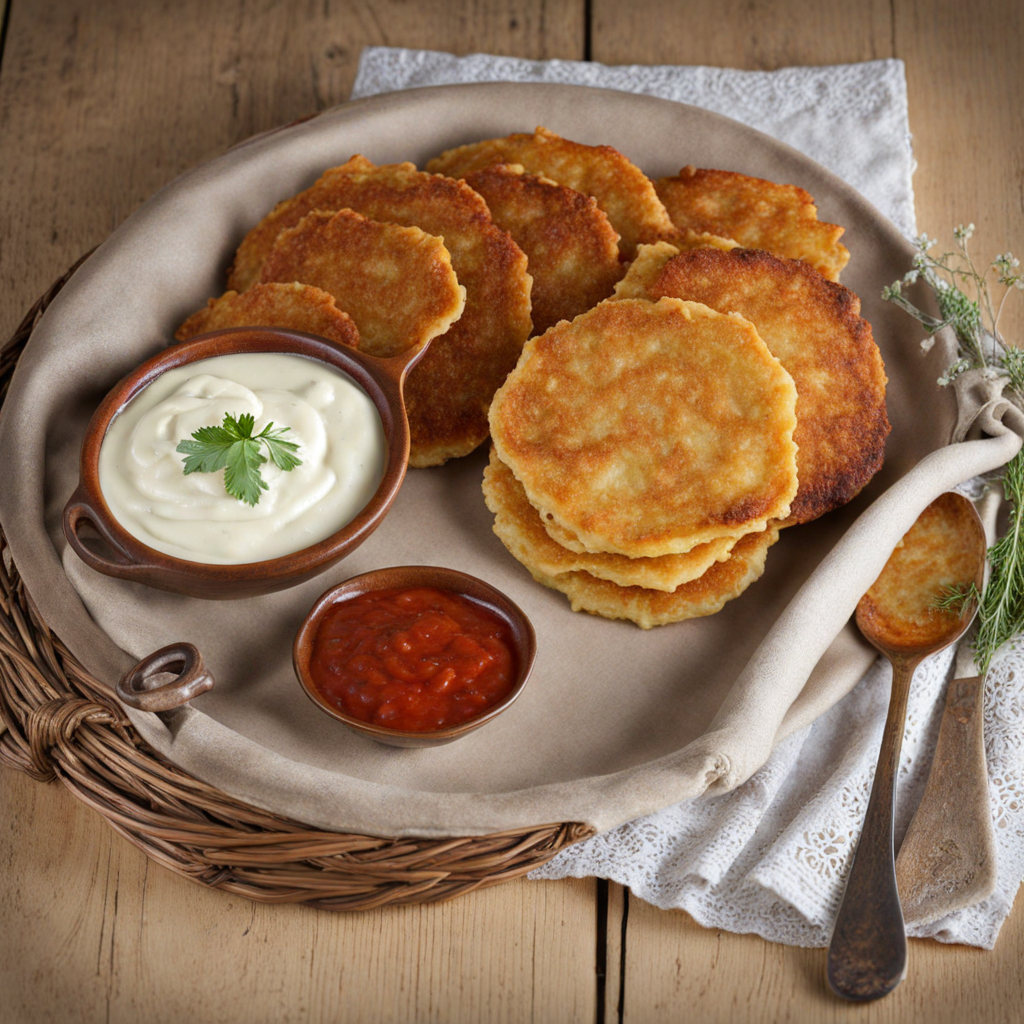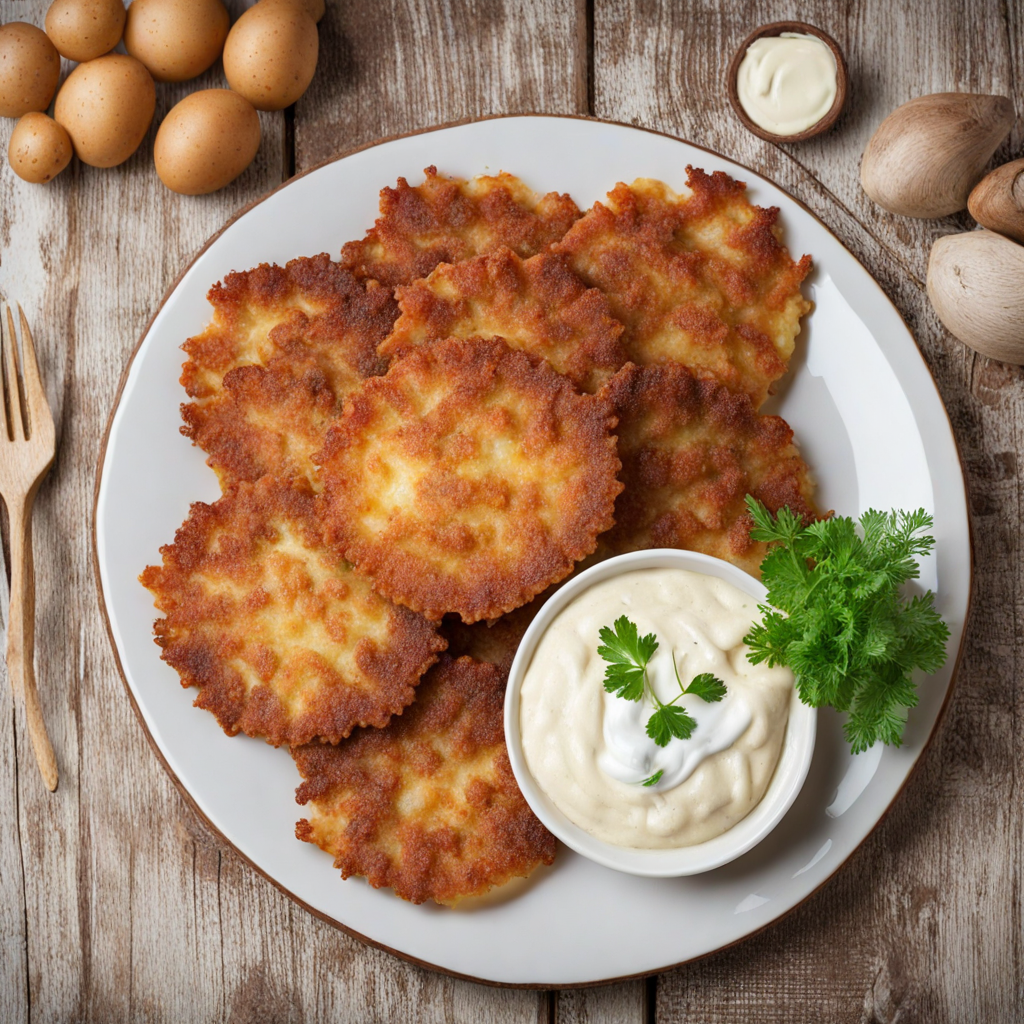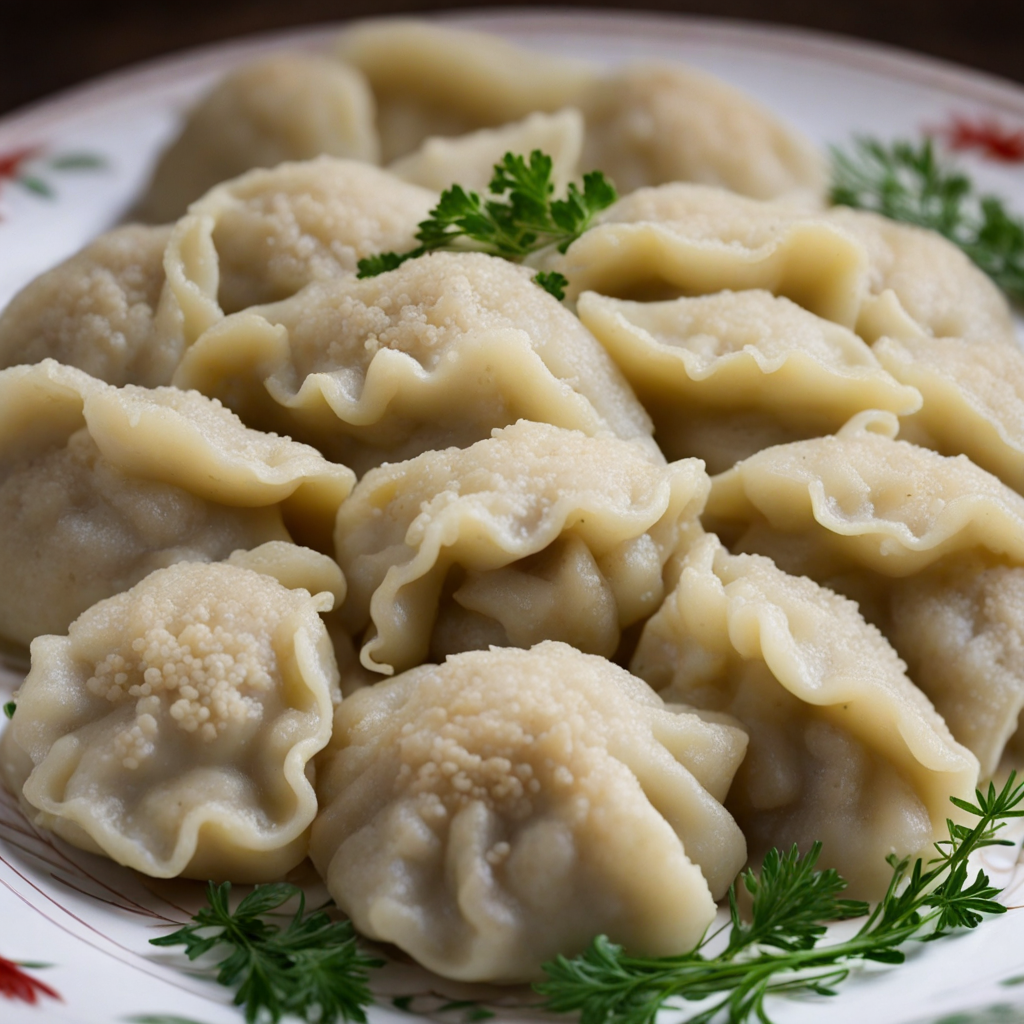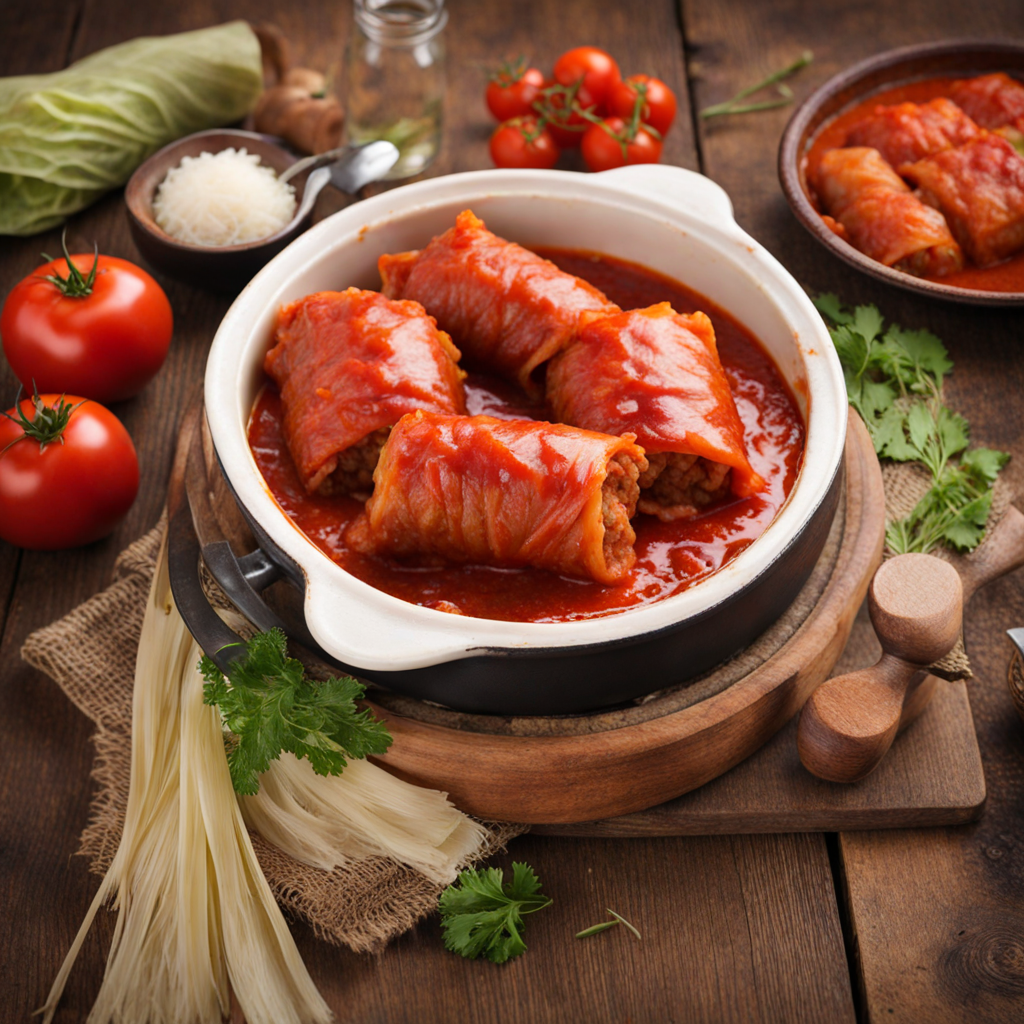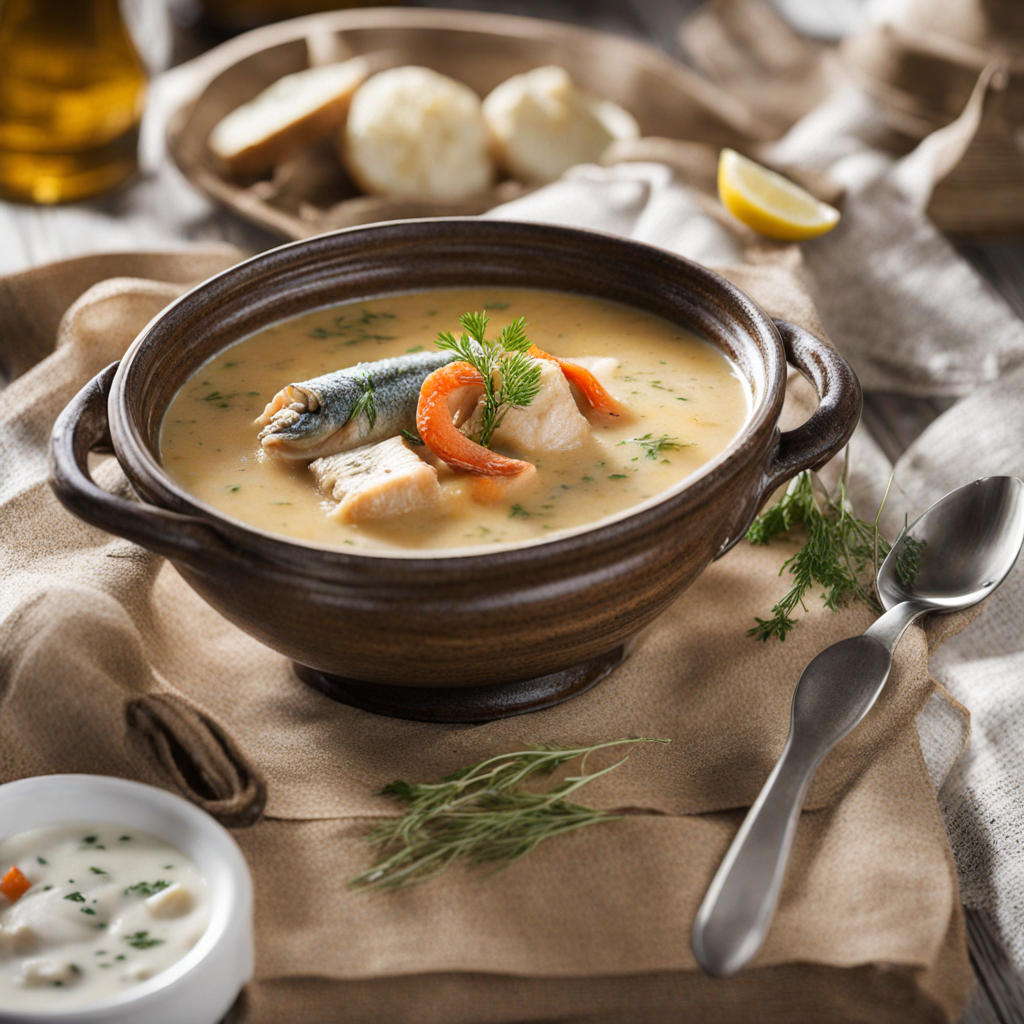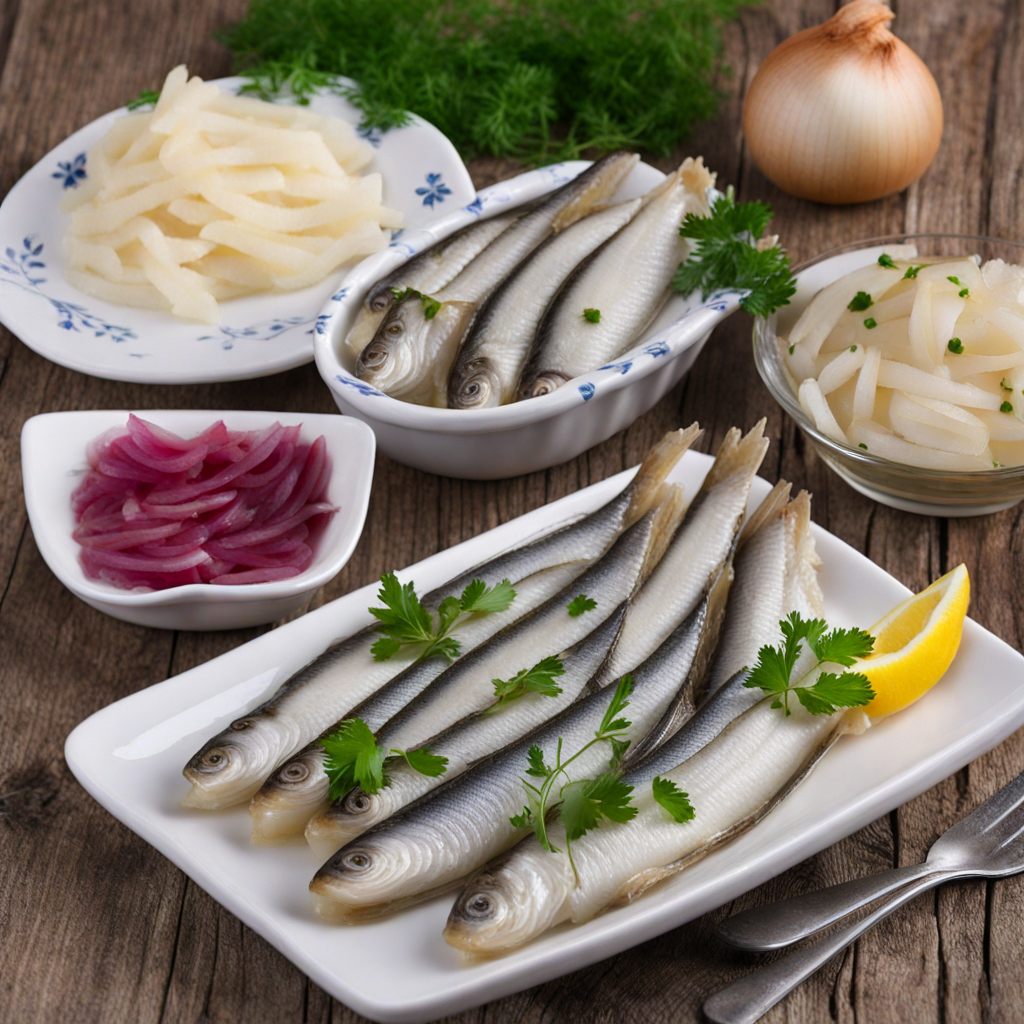Bulviniai Blynai
Bulviniai Blynai, a traditional dish from Lithuania, captures the essence of Eastern European comfort food with its simple yet hearty ingredients. These potato pancakes are crafted from grated raw potatoes, which are combined with a touch of flour, eggs, and seasoning. The mixture is then shaped into flat, round patties and fried to a golden crisp. The result is a delightful contrast of textures, with a crunchy exterior giving way to a soft and flavorful interior, making each bite a satisfying experience.
The flavor profile of Bulviniai Blynai is primarily defined by the earthy sweetness of the potatoes, complemented by the subtle richness of eggs and the slight nuttiness from frying. Often served with a dollop of sour cream or a sprinkle of fresh dill, these pancakes become a canvas for various toppings, allowing for a customizable experience that caters to different palates. The dish embodies the heartiness of Lithuanian cuisine, perfect for any occasion, whether as a side dish or a standalone meal.
How It Became This Dish
Bulviniai Blynai: A Culinary Journey through Lithuania's Heart and Heritage In the vast tapestry of Lithuanian cuisine, few dishes evoke a sense of comfort and nostalgia as profoundly as bulviniai blynai. These delectable potato pancakes, known for their crispy exterior and soft, fluffy interior, are a cherished staple that reflects the agricultural history, cultural resilience, and communal spirit of Lithuania. Understanding the origins and evolution of bulviniai blynai offers a fascinating glimpse into the nation’s culinary heritage. Origins The roots of bulviniai blynai can be traced back to the arrival of the potato in Europe in the late 16th century. Initially met with skepticism, the potato gradually became an essential crop in many countries, including Lithuania. By the 18th century, the tuber had firmly established itself in Lithuanian agriculture, transforming the dietary landscape of the region. Potatoes thrived in the temperate climate and fertile soil of Lithuania, quickly becoming a staple food for the peasantry. Bulviniai blynai emerged from this agricultural revolution. The dish combines grated raw potatoes, which are often mixed with flour, eggs, and seasoning before being pan-fried. This simple preparation method highlights the integral role of potatoes in the diet of the Lithuanian people and reflects the resourceful use of local ingredients. Cultural Significance Bulviniai blynai are more than just a food item; they symbolize the communal and familial ties that are central to Lithuanian culture. Traditionally, they are made during family gatherings, celebrations, and festivals, serving as a reminder of the importance of shared meals in strengthening bonds among loved ones. The act of preparing bulviniai blynai often involves multiple generations, with grandmothers passing down their secrets to younger family members, ensuring that the recipe and its accompanying traditions endure. The dish is also tied to specific Lithuanian holidays and customs. For instance, during Užgavėnės, the pre-Lenten festival celebrated with feasting and merriment, bulviniai blynai may be served alongside other traditional foods. This festival, marked by its lively processions and masquerades, emphasizes the communal spirit and culinary creativity of the Lithuanian people, with potato pancakes playing a central role. Development Over Time As Lithuania experienced various historical upheavals—ranging from partitions and wars to Soviet occupation—bulviniai blynai adapted and evolved. The resilience of the Lithuanian people is mirrored in their culinary practices, where traditional dishes have been maintained, albeit with regional variations and modern influences. In the early 20th century, the rise of nationalism and a renewed interest in folk traditions led to a revival of interest in traditional Lithuanian cuisine. Chefs and home cooks alike took pride in preparing authentic dishes like bulviniai blynai, utilizing locally-sourced ingredients and traditional cooking methods. This period saw an increase in the popularity of potato pancakes, as they became emblematic of Lithuanian identity and heritage. The post-Soviet era brought new challenges and opportunities for Lithuanian cuisine. With the re-establishment of independence in 1990, there was a significant shift towards embracing and celebrating Lithuania’s culinary roots. Bulviniai blynai found a renewed presence in restaurants and homes, often accompanied by modern twists—such as serving with gourmet toppings like smoked salmon, dill crème fraîche, or artisan cheeses—while retaining their traditional essence. Modern Interpretations Today, bulviniai blynai are widely enjoyed not only in Lithuania but also among the Lithuanian diaspora. They are featured in restaurants around the world, often alongside other traditional dishes like cepelinai (potato dumplings) and šaltibarščiai (cold beet soup). The globalization of food culture has brought attention to these beloved pancakes, allowing them to transcend their humble origins and resonate with a broader audience. Contemporary chefs are experimenting with bulviniai blynai by incorporating global flavors while respecting the dish’s heritage. Variations may include adding ingredients like green onions, garlic, or even cheese to the batter. Gluten-free options have also gained traction, with alternative flours being used to cater to modern dietary preferences. Despite these innovations, the heart of bulviniai blynai remains unchanged. The dish continues to evoke memories of home-cooked meals, family gatherings, and the warmth of Lithuanian hospitality. It serves as a delicious reminder of the land’s agricultural bounty and the cultural narratives woven through generations. Conclusion Bulviniai blynai are more than mere potato pancakes; they are a narrative of Lithuania’s history, culture, and culinary evolution. From their humble beginnings as a peasant food to their status as a symbol of national pride, these pancakes encapsulate the resilience and adaptability of a people who have faced numerous challenges throughout their history. As Lithuania continues to embrace its culinary heritage while navigating the complexities of modernity, bulviniai blynai stand as a testament to the enduring power of traditional foods to connect us with our past and anchor us in our present. Whether enjoyed at a family dinner table or featured in a chic urban eatery, bulviniai blynai will always carry the spirit of Lithuania, inviting all who taste them to partake in its rich cultural tapestry.
You may like
Discover local flavors from Lithuania


